10 is a typical winter problem: we advise what to do to avoid them
Tips that will help motorists cope with the most common problems in winter.
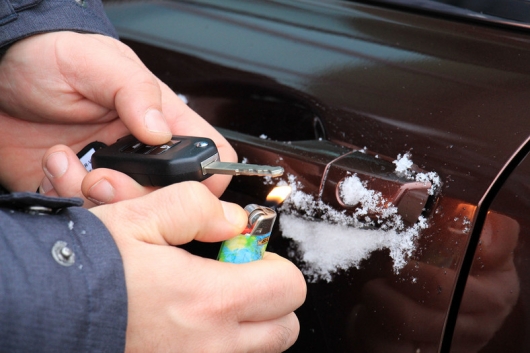
We remind you how to deal with common winter problems: fogged Windows, problems with start engine, frozen Windows/doors and locks.
- The majority of even modern engines need a warm-up. But only old cars need to warm up very long before you hit the road
- If the machine key has an electronic Board, heat the key with a lighter not
- Snow or mud stuck to the wheel affect the balance
The lower the temperature, the more viscous (thick) becomes motor oil. In the end, when you start a cold engine experiences increased resistance. That is why until heated through the engine, the car consumes the maximum amount of fuel. But the frozen oil also affects the operation of the vehicle battery, which, in order to crank the starter, needs a lot of energy. But there is a problem: the lower the outside temperature, the faster the battery loses its charge.
It is not surprising that the most frequent problem in winter, faced by thousands of motorists, is the discharge of the battery. All this leads to the fact that many car owners are unable to start the engine. By the way, the problem with the engine starting is not always associated with the discharged battery. So if your car won’t start in the cold, it is important to diagnose the real problem. Of course, if it’s the battery, simply recharge it or buy a new one if, for example, the battery has served for more than 4-5 winters. Easier to buy new than to suffer with failure of starting the engine.
Another common winter problem is the reduction of visibility due to fogging of glasses inside the car and icing on the outside. Interestingly, both problems are the most annoying when the temperature fluctuates around zero, or small negative values.
But did you know that Windows can also fog up and outside, when it’s sustained cold and temperature does not jump? In this case, the heat in the machine can produce the opposite effect, that is, the glass will fog up from the side of the street.
In addition to the reduced visibility and misted glass can make driving hazardous and uncomfortable.
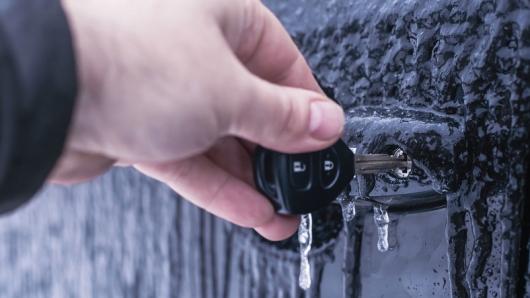
Many problems occur with the engine warming up at idle the car. Some people recommend warming the car and immediately start driving at low speeds, to accelerate warming up of the power unit. Suggest other warm as long as possible. So who is right? Probably, as always happens in our world, the truth lies somewhere in the middle. Yes, definitely warming the car you need.
But in moderation. Again, it all depends on what distance you ride. For example, if your trips are mostly short, it is better then to warm up the car longer, otherwise she will not have time to warm up. If every day you’re driving long distances, it makes no sense for a long time to warm the car will do it on the road. And, of course, it all depends on the temperature. Of course, when it’s below-15-20 degrees, the better the car is well warmed.
But did you know that most common problems can be prevented? For example, to minimize the risk of fogging, you need time to change the cabin air filter. Also machine glass should always be cleaned and degreased. Including don’t forget the formation of excess moisture include air conditioning, which is not, of course, cold at subzero temperatures on the street. Nevertheless, it will play an important role in machine to remove excess moisture from the cabin.
Also be careful with winter motor oil, which is more intended for the operation of the engine in the winter. Check the battery in advance and guide the prevention, topping up if necessary, water and an electrolyte. In General, to not get a headache in the winter, you have to remember that sleds need to cook in the summer.
To make it easier to learn how to solve basic problems with the car in the winter, we have gathered for you the answers to the most frequently asked questions for owners:
1. To warm up if the engine is cold or to go right?

If you own a modern car and on the street little cold, if the Windows machine is clean, can go at high speeds in 2-3 minutes after starting the engine. Remember that a cold engine is warming up in the cold very slowly. So be sure to follow the revs of the engine, not overloading it with high revs. Not long warming up the engine, we reduce the consumption of fuel at idling to maximum.
If your car is old, in this case, even when cold you have to warm the engine for at least 70 percent before you hit the road. If the street is not below -15 degrees, do not suggest to warm the engine at idle for more than 5-7 minutes.
By the way, it is important to remember that the temperature of the coolant one, but oil temperature is very different. And the antifreeze and oil are heated unevenly. Read more about this you can read here. This is especially true of urban environments, where because of low and small engine speeds the oil in it warms up in the cold very slowly. Every driver should know that while the engine oil is warmed, it cannot protect the engine from wear.
That’s why the first 30-40 minutes in the winter to avoid extreme or low vehicle speeds. Remember that everything should be in moderation. No you do not need to sit for hours at the house, warming up his car. Nevertheless, if on the street a strong frost to warm up the car all I need. But not completely. Go, if the glass of your car thawed. In the way the engine oil will warm up quicker.
2. How to prevent icing of the Windows?
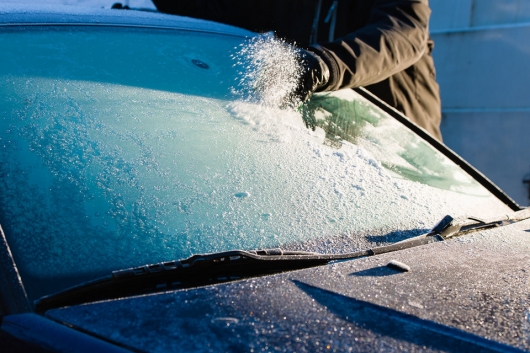
All drivers is especially annoying in the winter icing of Windows during a snowfall or freezing rain. The snow on the Windows and the car body first melts, then freezes, creating ice, which is difficult to remove. The same thing can cause high humidity or wet snow if the temperature drops sharply. To minimize the problem and avoid a situation when you Park the warm, warm car for the night.
Not to see in the morning covered with frost inside the car, I advise you, before you go home from the Parking lot, to open the door for a few minutes, allowing the cabin to cool down. Then the snow or the rain falling on the warm glass of the machine, will not melt, freezing after some time. Another solution: to put the car during a snowfall or winter precipitation under the canopy. If this is not possible, cover the windshield with a special protective Mat or screen.
3. What to do when the car locks freeze?
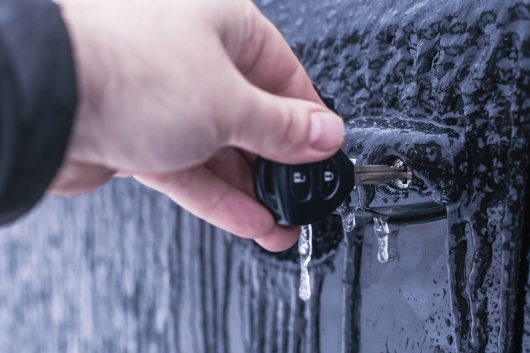
If you use the defroster for locks, which is made on the basis of alcohol, you should know that you can dissolve the lubricant inside the lock, which is necessary for the normal operation of the lock. Therefore, after the application of de-icer lock, after I unlock the door, lubricate the lock with special grease.
Please note that sometimes the door won’t open not due to the fact that the larva was frozen in the door lock.
Sometimes freezes the lock mechanism. By the way, sometimes the lock can freeze so that you can’t even close the car door. In this case you will have to call in a warm room (for example, in the underground Parking of the shopping center) and warm up the lock. To prevent this from happening, you will have to disassemble the door by removing the lining and lubricating the whole mechanism of the door lock.
4. The fogging of Windows. Is there a way to get rid of this?
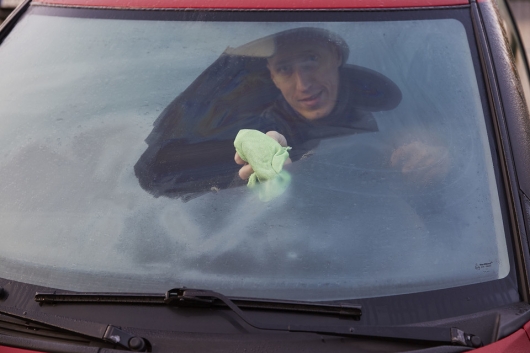
The reasons for fogging of glasses in the car can be several: the water gets inside the car; the Windows are not washed for months; the air intake that supplies air to the cabin, Packed leaves; dirty cabin air filter; damaged ventilation system, for example, when the air circulates in the cabin wrong. Also sweating glass in the car are in connection with a antifreeze leak from heater radiator. By the way, at very high humidity, when in the car, misty, is normal.
If it gets colder, moisture in the air will begin to evaporate, causing the glass will fog up less. In this case, don’t worry – with your car, most likely, everything is fine. Also don’t forget to turn on the air conditioner in the winter, which, of course, will not cool the air. Nevertheless, perfectly copes with its main task, bringing from the interior the excess moisture.
5. The diesel engine is reluctant to start
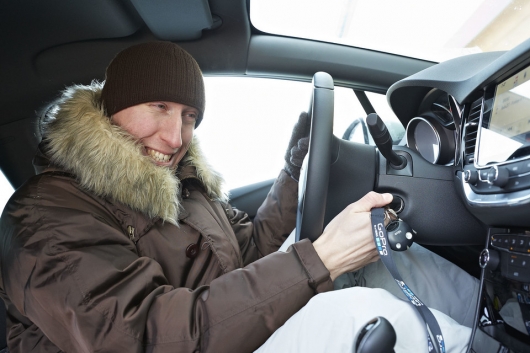
If the diesel engine won’t start or after you start running rough, check the condition of the glow plugs. Theoretically, if the spark is defective, you should see the collection tubes signal indicator about this or message should appear on the problems with candles.
The diesel engine also may refuse to start in winter due to dirty fuel filter or due to low quality of diesel fuel.
6. Use silicone lubricant for rubber door seals on the car body
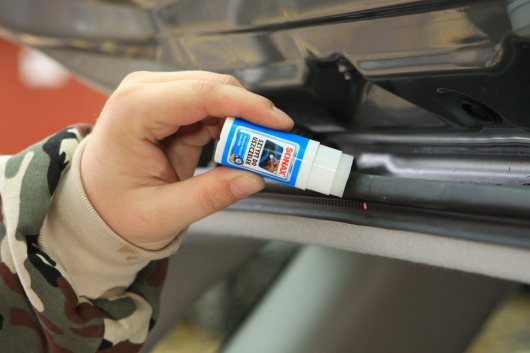
Don’t forget that the rubber door seals in winter must be greased with silicone lubricant (for example, you can buy special silicone spray). However, please note that you should not in any case apply to the rubber seals of the doors means petroleum-based. So forget about handling gum doors WD-40. This tool can damage the rubber seals.
7. The starter turns and the car won’t start, but only when it’s cold
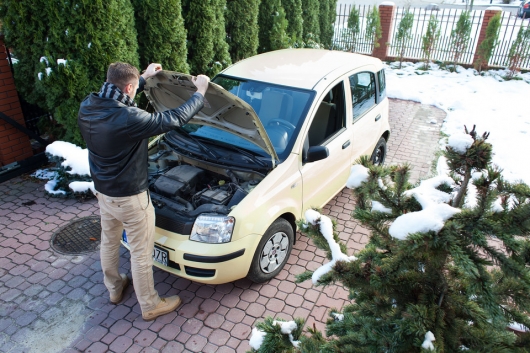
In many cars, the injection system does not work as long as the drive controlled by the starter reaches a certain speed. So, it is possible if your car won’t start, in spite of running the starter, it’s all about speed. The sound you are unlikely to be able to determine how fast the starter is spinning. Very often the difference in speed of rotation can be subtle. But the car may not start. Often this happens when your car battery is dead or there is a malfunction of the starter.
8. In the car is quickly discharged a new battery – the cause may be in the starter
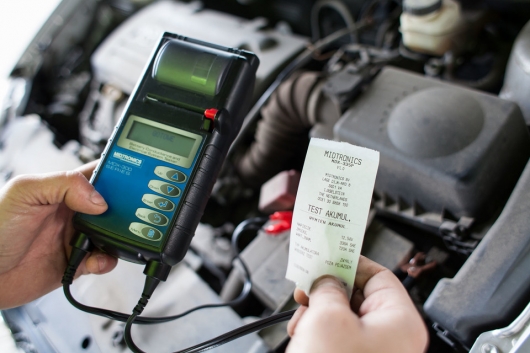
But what if you’re puzzling over the question of where does the electricity from a new battery? Unfortunately, a similar conundrum faced by many car enthusiasts. A common cause of fast discharge of the new battery is faulty starter, which he starts to eat the battery very quickly (a sharp need of starter in a large amount of electricity). In the end, a defective starter very quickly “kills” the battery.
Also electricity leakage can be due to on-Board devices (usually the excess current can “eat” any accessory that steals electricity when the machine is not on).
In such case, recharge the battery by measuring a battery tester before installing in the car after charging. Next, install the battery in the car and repeat the measurement using tester 1-2 minutes. If the electricity goes off, you will immediately see it on the screen of the device. In this case, either your battery is inoperable (battery no longer holds electricity), or the power goes due to the fact that some electrical equipment “eats” electricity, when the engine is off. The most common problem in this case, as a rule, is an emergency alarm or a problem with the electrics.
9. Follow the tire pressure is when there is a frost

Don’t forget to check out the tire pressure in the winter. Especially sharply when temperature is lowered, which affects the pressure in the tires of your car. This is a normal physical phenomenon: the lower the temperature, the lower the pressure in the wheels and Vice versa. For example, when in the street for several days the temperature drops from 0 ° C to -20 ° C, the air pressure in the wheels decreases.
You have to remember that when the wheel pressure becomes too low, it not only leads to rapid tread wear, but also affects vehicle safety. So in the winter, watch the weather forecast. If weather forecasters promise in the near future, a sharp drop in air temperature, we suggest that you have a little pump wheel (not more than 0.1-0.2 bar above the manufacturer’s recommended minimum). Don’t be afraid, it will not hurt the rubber.
10. What to do when winter started to hit the steering wheel
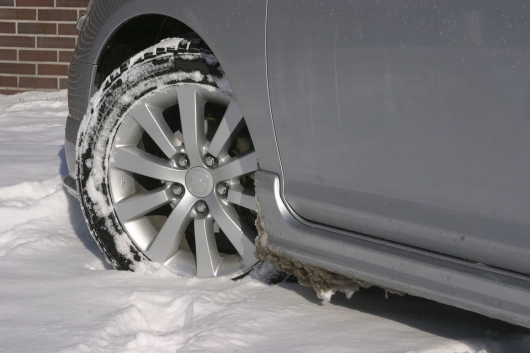
Do not panic and go to a service station for diagnostics of steering control. First check whether the snow sticks to the wheels and front arches. The fact that the snow likes to stick to the inner side of the rim or to accumulate between the wheel and arch.
Two tips: first, after a trip on a snowy road you’ll feel an unusual vibration on the steering wheel. Be sure to check the front wheels. It’s possible that something’s stuck to him. Second, do not let the snow accumulate on the front arches. Otherwise, it will not only accumulate, narrowing the lumen of the wheel arches, but to freeze into a solid block of ice. Sooner or later it will lead to the fact that the front wheels can lock. It can also cause your car will decrease the angle of rotation.
If the snow stuck in the front arches or RV and you are unable to clean it, then have to go in a warm wash or look for heated Parking. For example, you can Park your car in the underground Parking lot of some shopping center where your machine is completely thawed.
